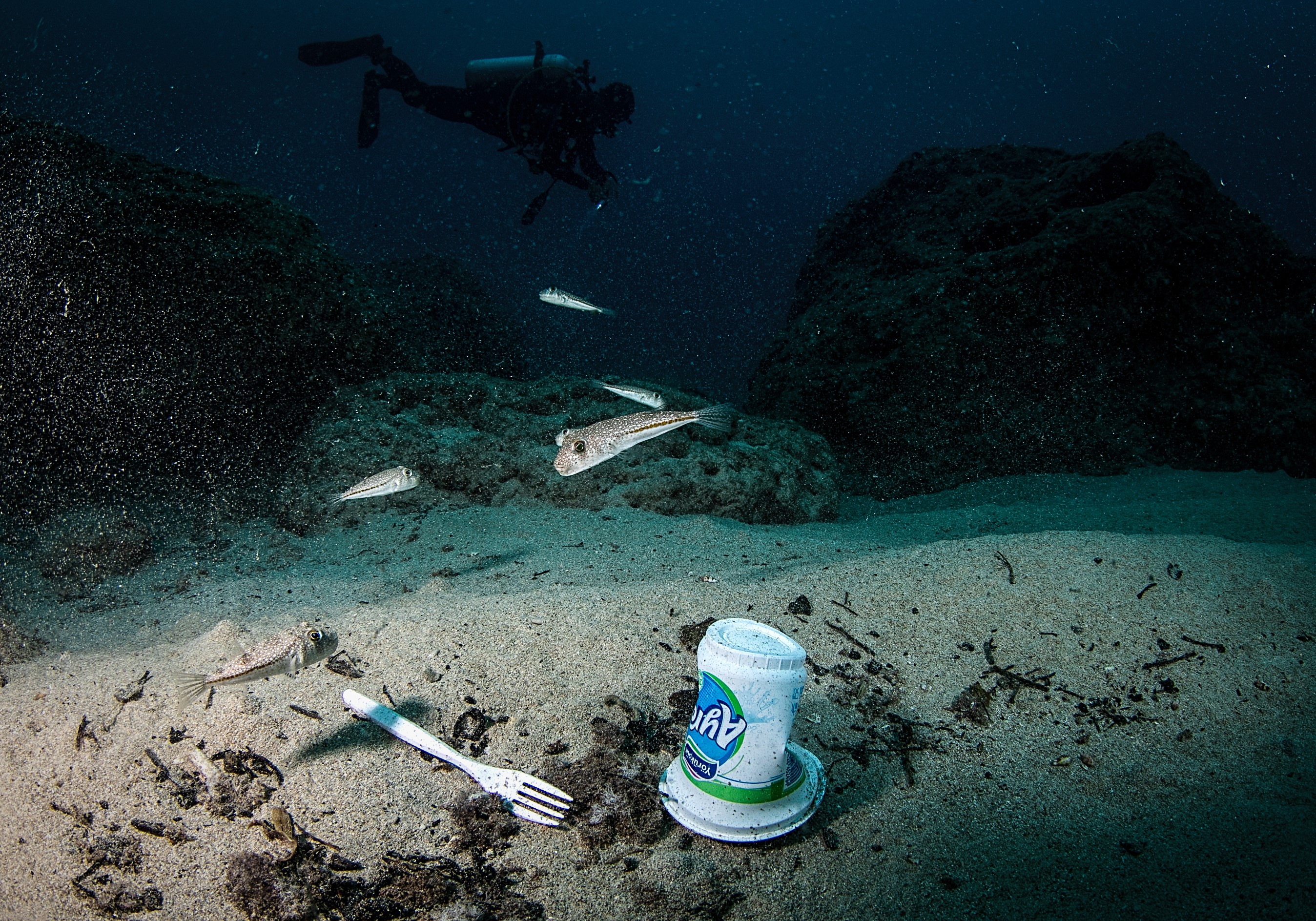- An average of about 8 million tons of plastic enters the ocean as pollution annually.
- Most of this is single-use plastics. Shoppers use 500 billion plastic bags worldwide every year.
- Most plastics never fully break down. They fragment into smaller pieces called microplastics, which have been found in human poop, Arctic ice, and the deepest part of the Mariana Trench.
- A new study reveals that just as many, if not more, microplastics accumulate in the deep ocean as they do on the surface.
- Visit Business Insider’s homepage for more stories.
On average, 8.8 million tons of plastic enters the ocean every year. The maximum amount could be closer to 14 million tons – about the weight of 2 million elephants.
Most plastics take hundreds of years to break down. And even then, they just splinter into very small pieces called microplastics, which will likely never biodegrade. Where these microplastics travel and accumulate in the oceans hasn’t been well understood, since most studies examined the surface of the water.
But new research published in the journal Scientific Reports has revealed that just as much, if not more, microplastics accumulate in deep ocean environments (at depths between 650 and 2,000 feet) as they do on the surface.
This discovery, the study authors said, demonstrates that the repository of small plastics “extends much further and more extensively into the waters, sediments, and animal communities of the deep sea” than scientists previously realized.
Microplastics in the deep ocean
To examine how pervasive microplastics are in deep parts of the open ocean, Anela Choy, the lead author of the new study, and her team sent remote-operated underwater vehicles to varying depths of Monterey Bay in California.
In that submarine canyon off the coast, Choy's group found microplastics even at the greatest depth they sampled: 3,200 feet beneath the waves. The largest concentration of microplastics was found at depths between 650 and 2,000 feet.
Remarkably, the concentration of microplastics in this area - between 12 and 15 particles per cubic meter - was, on average, equal to if not higher than that of the Great Pacific Garbage Patch. That swath of water, which is located between Hawaii and California, contains more than 1.8 trillion pieces of floating plastic and microplastic (the equivalent of 250 pieces of debris for every person on Earth).

Choy and her colleagues said most of the microplastics they found in Monterey Bay were made of the types of plastic typically used to make single-use packaging, like polyethylene terephthalate (PET). Most soda and water bottles are made with PET.
The scientists think these microplastics - which usually float on the surface - are making their way to the ocean depths by hitching a ride in the guts of marine animals like larvaceans and red crabs.
These two creatures munch on particles of plankton the same size as microplastics. Larvaceans are filter-feeders, meaning they capture food floating in the deep ocean using sticky filters made of mucus. Once they imbibe what they need, they discard those filters, which sink to the sea floor.
The study authors discovered PET plastic in the intestines and discarded mucus of both types of animals. So it's likely that microplastics get caught in these filters and discarded with them, sinking down to the watery depths.

We don't know enough about the extent of the plastic problem
Previous research has found similarly alarming quantities of plastic in unexpected places. A 2015 study estimated that there's between 15 and 51 trillion pieces of microplastics in the world's oceans, weighing up to 261,000 tons. Earlier this year, scientists found upwards of 414 million pieces of trash on scarcely populated islands in the Indian Ocean. In February, researchers found plastic in the guts of tiny animals living in the deepest, darkest part of the Pacific some 36,000 feet down.

Microplastics aren't just a problem for marine life. They make their way into the food we eat and beverages we drink, even showing up in our poop, according to the Smithsonian Institute. Much of the fish and shellfish we ingest these microplastics, and although scientists don't yet know the full consequences they pose to human health, a 2013 study found that marine animals can accumulate potentially hazardous chemicals from eating those plastics. That can lead them to suffer from tumors and liver problems.
Those chemicals could then move up the food chain.
The revelation that microplastics appear to be just as numerous in deep parts of the ocean as on the surface is a reminder of how little we know about the true extent of the plastic problem.
"These results are intriguing and show the need for similar deep-water surveys in other locations, so we can find out how widespread the problem is," Bruce Robison, a co-author on the paper, said in a press release.
Answering that question will become more essential in the coming years, since the amount of plastic in the ocean could triple in the next decade, entangling and killing more marine animals like whales, and threatening to inundate island communities with millions of pieces of trash.

